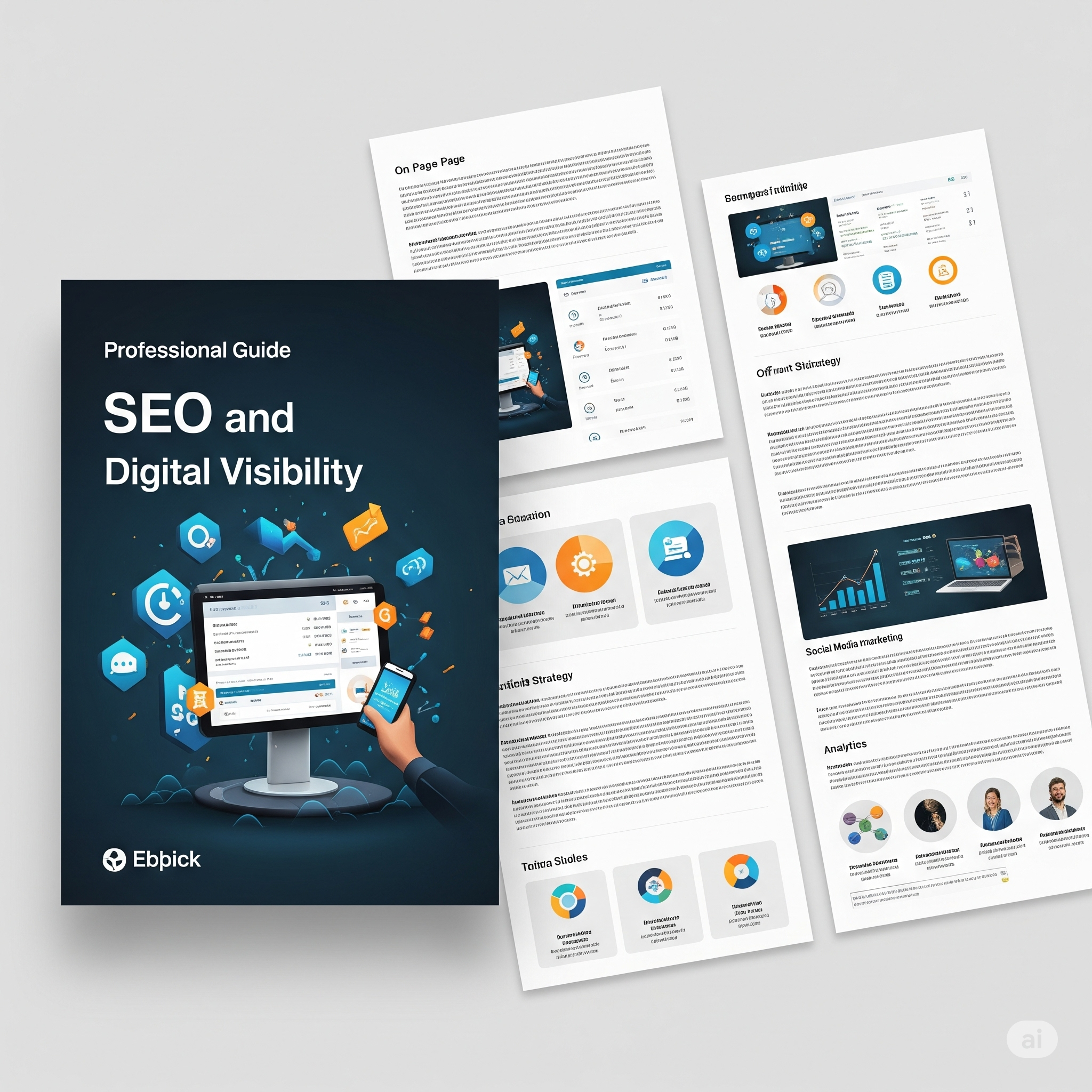In the competitive digital landscape, having a great website isn’t enough. You need to ensure people can find it. That’s where Search Engine Optimization (SEO) comes in. While the world of SEO can seem complex and intimidating, understanding the fundamentals is the most critical first step. This professional blog post serves as your comprehensive starter guide to mastering the basics of SEO and setting your website up for long-term success.
What Exactly is SEO?
SEO is the practice of optimizing your website to improve its visibility in search engine results. It’s about attracting organic, non-paid traffic from search engines like Google, Bing, and others. The core principle is simple: the higher your website ranks for relevant keywords, the more likely potential customers and readers are to find you. Think of search engines as a digital library, and SEO as the process of ensuring your book is not only in the right section but also at the top of the shelf.
The Foundational Pillars of SEO
A solid SEO strategy is built on several key pillars. By focusing on these areas, you can create a strong foundation for your website’s performance.
1. The User is King: Content is Still the Core
At its heart, SEO is about providing value to the user. Search engines are constantly evolving to deliver the most helpful and relevant results. This means your content must be:
- High-Quality and Unique: Don’t just rehash what’s already out there. Create original, in-depth content that answers your audience’s questions thoroughly.
- Targeted and Relevant: Use keyword research to identify the words and phrases your target audience uses. However, don’t “keyword stuff.” Weave these terms naturally into your content to create a seamless reading experience.
- Well-Structured and Readable: Break up long text with headings, subheadings, bullet points, and images. This improves readability for users and helps search engines understand the structure and topic of your page.
2. On-Page SEO: Optimizing the Page Itself
This refers to the elements you can control directly on your web pages. Pay close attention to:
- Title Tags and Meta Descriptions: These are the headlines and summaries that appear in search results. They should be compelling, accurate, and contain your primary keywords to encourage clicks.
- URL Structure: Create short, descriptive, and keyword-rich URLs that are easy for both users and search engines to understand.
- Header Tags (H1, H2, H3, etc.): Use headings to create a clear content hierarchy. Your H1 tag should be the main title of your page, while H2s and H3s organize subtopics.
- Image Optimization: Use descriptive file names and “alt text” for images. This helps search engines understand the context of your images and improves accessibility for visually impaired users.
3. Technical SEO: The Engine Under the Hood
Technical SEO ensures your website is easily crawled and indexed by search engines. It’s the behind-the-scenes work that makes everything run smoothly. Key areas include:
- Website Speed: A slow-loading website can frustrate users and hurt your rankings. Optimize your site for speed on both desktop and mobile.
- Mobile-Friendliness: With a majority of web traffic coming from mobile devices, your site must be responsive and provide an excellent user experience on all screen sizes.
- Sitemaps and
robots.txt: An XML sitemap helps search engines discover all the important pages on your site. Therobots.txtfile tells search engine crawlers which pages to crawl and which to ignore. - HTTPS: A secure website using HTTPS is a ranking factor and builds trust with your users.
4. Off-Page SEO: Building Your Reputation
This involves actions taken outside of your website to influence its rankings. The most prominent factor here is link building. When reputable websites link to your content, it signals to search engines that your site is a trusted and authoritative source of information. Earning high-quality backlinks can significantly boost your site’s credibility and search rankings.
Getting Started: A Simple Action Plan
- Conduct Keyword Research: Use tools like Google Keyword Planner to find out what your audience is searching for.
- Audit Your Website: Use a tool like Google Search Console to check for any technical issues, such as crawl errors or broken links.
- Optimize Your Core Pages: Start by improving the on-page elements of your most important pages, ensuring they have compelling titles, meta descriptions, and well-structured content.
- Create a Content Plan: Develop a strategy to consistently publish high-quality, valuable content that targets your researched keywords.
- Monitor Your Progress: Use Google Analytics and Google Search Console to track your organic traffic, keyword rankings, and user behavior.
SEO is a marathon, not a sprint. The key is to start with the fundamentals, consistently create valuable content, and continuously monitor your website’s performance. By following this starter guide, you’ll be well on your way to improving your digital visibility and achieving your business goals.
Discover more from Nexus
Subscribe to get the latest posts sent to your email.

https://shorturl.fm/N9UM4
https://shorturl.fm/ubfmE
https://shorturl.fm/Ge56k
https://shorturl.fm/CF0H1
https://shorturl.fm/0dPKu
https://shorturl.fm/yXJeC
https://shorturl.fm/o0WTA
https://shorturl.fm/sfAIQ
https://shorturl.fm/b5ozc
https://shorturl.fm/rUFWm